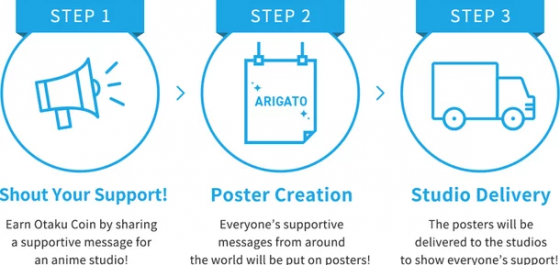
What You Need to Know:

- There are many anime studios in Japan, but Tatsunoko Production is special. Founded in 1962, it reached its 56th year this year. It’s one of the leading animation companies with a proud history in Japan.
- Many anime companies were started under the influence of Tatsunoko, and it’s considered one of the three main sources of Japanese animation.
- Within that long history, the company has made various masterpieces like Speed Racer, Science Ninja Team Gatchaman, and the Time Bokan series. In recent years, it has made huge hits like King of Prism, showing that it’s a studio that fuses tradition with modernity.
- What does Tatsunoko Production think? What are its creators aiming for? How do they create titles? Tokyo Otaku Mode had the opportunity to sit down with president Yuzo Kawahara, and the head of the production department, Yutaka Oomatsu. Let's dive more into the world of Tatsunoko!

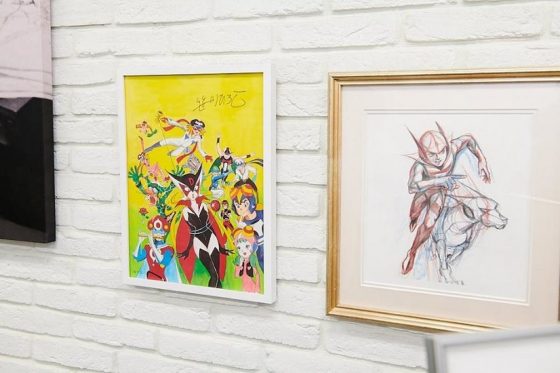
Source: Official Press Release
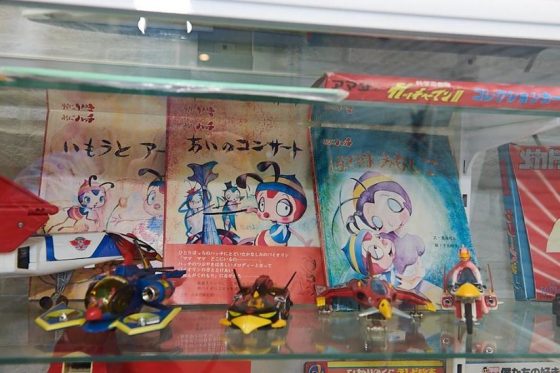
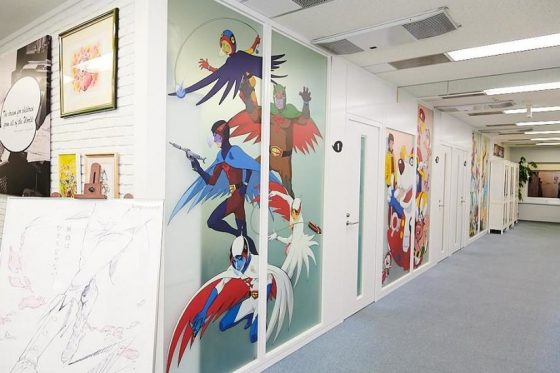
Speed Racer Was of Unimaginable Quality at the Time
Tokyo Otaku Mode (Tadashi Sudo): Could you please tell us about Tatsunoko Production’s founding?
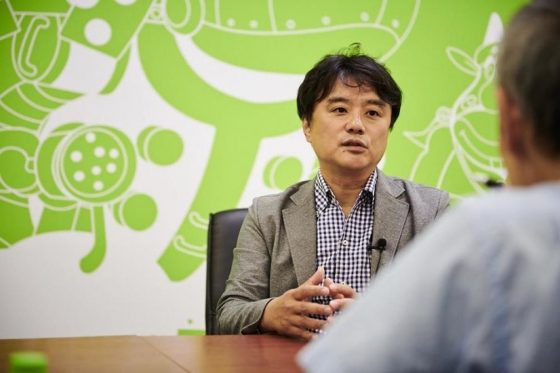
Kuwahara: It began in 1962 as a manga studio run by three brothers, with Tatsuo Yoshida at the head. Their first anime was Space Ace in 1965. It was a project originally made by Toei Animation but it came to a standstill, so Tatsunoko took it over and released it.
Tokyo Otaku Mode (Tadashi Sudo): There weren’t many anime studios in the 1960s.
Kuwahara: That’s right. When Tatsunoko switched from a manga company to an anime production company, the brothers studied at Toei and learned animation techniques. Hiroshi Sasagawa, who is now one of our advisors, spearheaded the group.
Tokyo Otaku Mode (Tadashi Sudo): What was the first masterpiece made?
Kuwahara: It was Speed Racer. We also had Space Ace, but anime was moving towards a simpler style at the time. Tatsuo Yoshida, the founder, wanted to create dramatic art similar to American comics, so Speed Racer was made with a quality that was unimaginable at the time. That became our roots and connected to Tatsunoko’s future.
Tokyo Otaku Mode (Tadashi Sudo): Speed Racer was popular overseas, including in the United States.
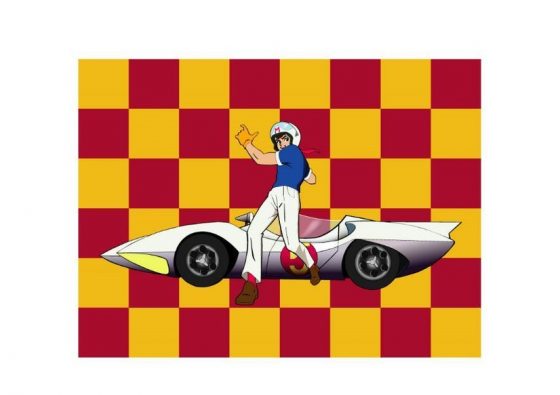
(C)タツノコプロ
(C) Tatsunoko Production
Kuwahara: Speed Racer was released overseas pretty early. Since Tatsuo Yoshida wanted to create an art style like American comics and American animation, they began thinking of showing it overseas and introduced it that way. It ended up becoming popular. There were people who thought that Speed Racer was an American title.
Tokyo Otaku Mode (Tadashi Sudo): The same happened with Science Ninja Team Gatchaman.
Kuwahara: Thanks to the results of Speed Racer, Tatsunoko’s brand was established, and Gatchaman was released in the United States, too. Speed Racer was 50 years ago and Gatchaman was 45-46 years ago.
New Originals and Remakes of Previous Originals
Tokyo Otaku Mode (Tadashi Sudo): Does the culture that Tatsunoko had at the time of founding continue to this day?
Kuwahara: Tatsuo Yoshida’s idea of bringing dreams to the children of the world has continued. As long as Tatsunoko exists, we won’t stray. We also focus on doing original work. Because the three founders were originally manga artists, they were very clear about that in their production. Recently we haven’t made many titles that are adaptations of manga or novels, but rather originals or remakes of originals.
Tokyo Otaku Mode (Tadashi Sudo): You have a good balance of making originals while remaking your own past originals.
Kuwahara: Tatsunoko has two missions. One is to make the content and characters that our predecessors left behind shine in today’s era. The second is to inherit the spirit of our predecessors and bring forth new titles.
I feel that they’re equally important. We have to revive the content and characters from the past and we also have to create new titles. We’ve reached our 55th anniversary and had Time Bokan 24 and Infini-T Force, titles featuring four big heroes. Right now we are making two completely original titles.
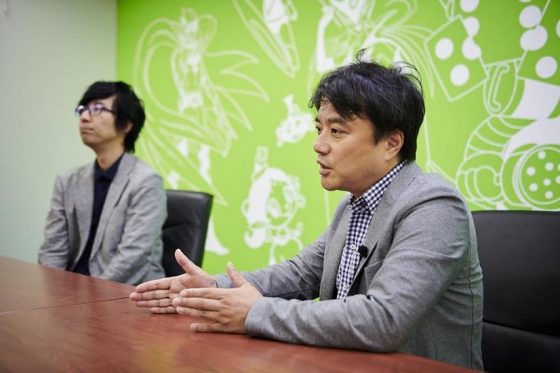
Tokyo Otaku Mode (Tadashi Sudo): What are those?
Kuwahara: We have an original title, Egao no Daika, that we announced in October and is scheduled for January. Our other title is the third season of King of Prism.
Tokyo Otaku Mode (Tadashi Sudo): For your remakes, you worked with Level-5 on Time Bokan 24 and made Infini-T Force completely with CGI, both new things for you. For Time Bokan, you also had Time Bokan: The Villains Strike Back, in which the villains became the main characters. Do you focus on always trying new things?
Kuwahara: I think about what is the most effective way to do things and who I want to work with to revive our old titles for the current era. Remakes are difficult. We can’t just remake it the exact same way, but if we change it too much, its fans won’t be happy. Infini-T Force has a fantastic balance that had fans both old and new supporting it.
For Time Bokan: The Villains Strike Back, the villains are really familiar to the audience. It was a strategy to have the villains as the main characters in order to have a lot of people watch it live in the evenings.
Matchmaking Doronjo and Black Jack? Tradition and Modernity
Tokyo Otaku Mode (Tadashi Sudo): Tatsunoko is great with original titles, but do you also keep in mind the expansion of the characters?
Kuwahara: Regarding character expansion, when we’re remaking a title, we don’t think just of rereleasing the old title on cable TV or on streaming, but we also want people to interact with the characters through merchandising.
Last year, we released a figure from Genesis Climber MOSPEADA for a little less than 20,000 yen. It’s not as well-known as, say, Gatchaman, but it has many hardcore fans. We were able to sell about 10,000 figures. We also sold many figures from Golden Warrior Gold Lightan.
Tokyo Otaku Mode (Tadashi Sudo): I was surprised when I saw the commercial for Partner Agent, a matchmaking service, that featured Doronjo from Yatterman and Black Jack from Osamu Tezuka’s Black Jack.

(C)TEZUKA PRODUCTIONS (C)TATSUNOKO PRODUCTION
Kuwahara: I was really happy that it was a hot topic. At first, it was just posters in trains and videos on the homepage, but the characters had power. The client is continuing to use them in advertisements. They thought it would be interesting to match two creators, so they asked us and Tezuka Productions.
Tokyo Otaku Mode (Tadashi Sudo): Well-established companies are bolder and move more quickly.
Kuwahara: We own our copyrights so we can make decisions quickly, which is very different from other production companies.
Tokyo Otaku Mode (Tadashi Sudo): You’ve been increasing the number of titles you’re working on, but are you doing that purposely?
Kuwahara: We do our best with what we have, so we’re actually not purposely raising our numbers. It’s not good to just keep going on momentum and nothing else.
We’re also working with other production companies. Infini-T Force was completely 3D CGI, so we made it with Digital Frontier Inc. Last year, we worked on Transformers, aimed towards international streaming, with Scarab Studio, a CGI studio. We also work with 2D animation studios. We’re thinking of continuing to work with other companies on titles that we plan and produce.

(C) Tatsunoko Production/Infini-T Force Production Committee
Tokyo Otaku Mode (Tadashi Sudo): You’re both a production and a planning company.
Kuwahara: That’s on purpose. We focus on making titles that can be seen by everyone, from children to adults, or as a family. At the same time, they’re titles that are aimed towards core anime fans as well.
Holding Planning Competitions to Create Original Titles
Tokyo Otaku Mode (Tadashi Sudo): Please tell us about how Tatsunoko Production creates titles.
Oomatsu: The studio is in our main building, and we usually make about three TV titles. We then outsource other titles, like Infini-T Force.
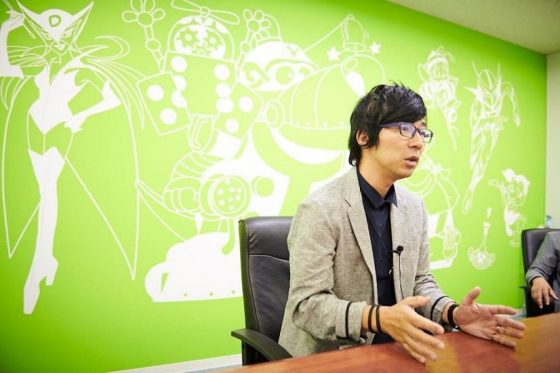
Tokyo Otaku Mode (Tadashi Sudo): The studio was in Kokubunji for a long time from 1964, but both the studio and the main building moved to one building in Mitaka in 2013.
Oomatsu: The main building in Kokubunji was just for management and business, while the studio was in a separate place. We wanted to merge them. Before the move, I was working at Production I.G., which is also in Kokubunji, so I knew that Tatsunoko was nearby.
Tokyo Otaku Mode (Tadashi Sudo): By making a new studio, I feel like Tatsunoko is genuinely aiming towards digital art production (*1).
*1. Digital art production is the act of using a tablet and stylus instead of paper and pencil like in 2D cel art. The data is directly saved onto a computer.
Oomatsu: Tatsunoko was using digital art before I came. I had a lot of interest in the anime industry fully digitizing because I felt that paper and pencil had its limits. I heard that Tatsunoko was going digital through trial and error, so that was a big incentive for me to switch companies.
It isn’t like our efficiency goes up or we draw better just because we went digital, but there are various possibilities there that I want to try.
Tokyo Otaku Mode (Tadashi Sudo): You’ve worked at both Production I.G. and A-1 Pictures, but what makes Tatsunoko different from other studios?
Oomatsu: Because Tatsunoko holds a lot of copyrights, we have a big business department, which is very different. It has a long history, but I feel like it’s a new studio. This year we’ve reached our 56th year, but it’s a very casual studio. We’re very flexible when it comes to production, which is why we try things like digital art and digitizing the production process.
Tokyo Otaku Mode (Tadashi Sudo): The studio is known for original titles, but what is the process behind that?
Oomatsu: We have regular planning meetings. We decide themes and where we’d like it to air, such as the late-night anime programming block on Nippon Television called AnichU. We gather ideas from around the company and have a sort of competition.
Tokyo Otaku Mode (Tadashi Sudo): When you have that competition, do you focus on picking plans that suit the company’s direction?
Oomatsu: Not really. We focus on what we want to do and what plans we find interesting, but I do believe that everyone has the idea of what a Tatsunoko title is like in their minds. Tatsunoko is known for hero stories or stories that have dramatic parts to them. Somehow that’s the feeling we’ve grown to have and it’s become one of our characteristics.
Tokyo Otaku Mode (Tadashi Sudo): King of Prism has become a huge hit. It’s a little different from your other titles, so how did come into existence?
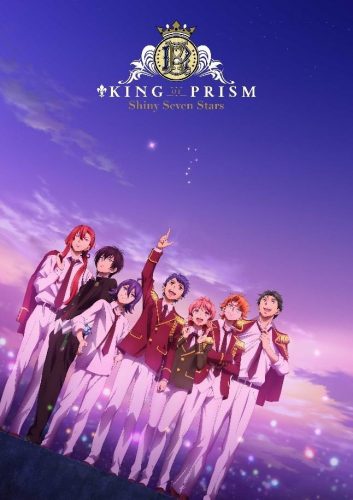
(C) T-ARTS/syn Sophia/Avex Pictures/Tatsunoko Pro/King of Prism SSS Production Committee
Kuwahara: Two producers wanted to create a male-centered spin-off of Pretty Rhythm. I also strongly felt like I wanted to bring the genius of the director, Masakazu Hishida, to the world. King of Prism came out from the desires of both of those companies.
Tokyo Otaku Mode (Tadashi Sudo): The idea of making a male-centered spin-off from a female-led series is novel.
Kuwahara: We were dubious at the time, but the two producers really wanted a new title for Masakazu Hishida, who had always worked on Pretty Rhythm. If they were that insistent on it, then we should try it. It’s a title that was made really well in a limited amount of time and resources.
“Believe in the Power of Tatsunoko” - The Strength of the Titles and Characters
Tokyo Otaku Mode (Tadashi Sudo): You mentioned quality, but how do you maintain it when you’re shorthanded like now?
Oomatsu: Every studio is short-staffed right now, so training human resources is currently the most important thing. We want to go digital while training young staff. I believe that assertively giving chances to young staff to work connects to the quality of the title.
Tokyo Otaku Mode (Tadashi Sudo): Are you hiring new graduates as animators?
Oomatsu: We are. Two years ago we hired 5, last year 3, and we’d like to hire 5 more next year. There isn’t anyone in the current generation who is unfamiliar with digital art and they’re rather flexible. I believe that getting young animators from the current generation will bring us into a new phase. They make things and are intuitive. I believe things will change drastically with this generation. I want to update the studio to use those human resources to the best of our ability.

Tokyo Otaku Mode (Tadashi Sudo): Have anime fans changed from before, too?
Oomatsu: I have various thoughts about that. When I entered the industry in 2000, there were many people who liked subculture titles like Cowboy Bebop and Ghost in the Shell. Evangelion was featured in the subculture magazine Quick Japan. But I think those tastes have disappeared.
After that, the video rental business really boomed but anime sells better as DVDs and Blu-Rays. The industry has moved to make radical titles for enthusiasts over the past 15, 16 years.
However, the need for DVDs and Blu-Rays has shrunk a little bit. On the other hand, the numbers of anime being produced hasn’t decreased and I don’t feel like the expectation value has decreased, either. I began thinking that I have to make titles for a different audience than the one I originally imagined.
Tokyo Otaku Mode (Tadashi Sudo): Don’t titles like Gatchaman and Casshan become your strength when you want to make titles that even non-anime fans can enjoy?
Oomatsu: Those titles have universal strengths like characters, design, and drama. I feel that earnestly since joining Tatsunoko Production. “Believe in Tatsunoko’s power” is our slogan this year.
We’re Extremely Delighted by Fans’ Reactions
Tokyo Otaku Mode (Tadashi Sudo): This is an interview that fans overseas will also read, so I’d like to ask you about that, too. Are there any foreign staff members at Tatsunoko Production?
Oomatsu: There aren’t any at the moment, but I do believe I’d like to work with foreign staff. There is a high hurdle when it comes to foreign visas, but I’d like to clear that hurdle and create an environment where we can work together. On the other hand, as we continue digitizing, we are able to directly connect with foreign creators with one click. That’s one of the merits to digitizing that we’ve discovered. Because we’re no longer using paper, we can directly connect with each other over the internet. The young production staff uses Google Translate to do things like ask a French person to work on a cut. I believe we’re going to become more global as time passes.
Tokyo Otaku Mode (Tadashi Sudo): As a studio, is there anything you try to do that’s aimed towards a foreign audience?
Kuwahara: We would like to release our titles internationally to go along with our founder’s words of, “to give dreams to children all around the world.”
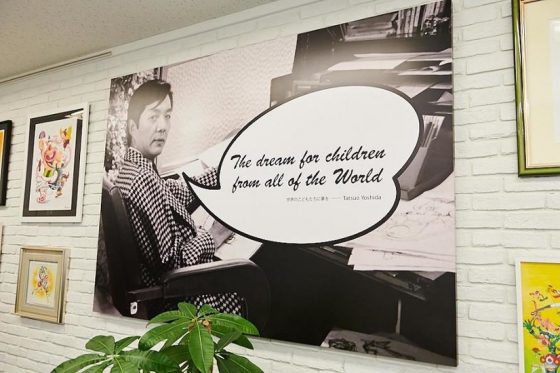
Tokyo Otaku Mode (Tadashi Sudo): In 2008, Speed Racer was made into a live-action movie in the United States. Will you continue doing that sort of thing?
Kuwahara: Speed Racer and Gatchaman are popular overseas, so I believe our mission is to have them expand overseas even further.
Tokyo Otaku Mode (Tadashi Sudo): Is there anything that foreign fans can do for the studio?
Oomatsu: We’ve always received letters from passionate fans. We’re extremely happy when people tell us how they feel about our titles. We make these titles and broadcast them, but we don’t know who is watching, so when we get concrete reactions from the audience, we’re extremely grateful and use that information going forward.
Kuwahara: I think about how to get people to watch all of Tatsunoko’s titles or to increase the number of fans who buy all of our titles. I want people to believe in the quality of our titles. I believe that by keeping our quality high and creating titles with individuality, we’ll be able to increase the number of fans supporting us.
Tokyo Otaku Mode (Tadashi Sudo): Tatsunoko is a brand that everyone knows, but do you aim to increase your brand awareness even further?
Oomatsu: Tatsunoko has its brand, but I believe that we’re still lacking PR for what we’re currently doing. I want to make us into a recognizable label. There are fewer people who want to be animators, so I feel very strongly that the industry is in danger. I want young people to enter the industry, so I want to change our branding even just a little bit. We’re also doing cutting-edge activities in the digital field, so I want to think of welcoming creators.
Tokyo Otaku Mode (Tadashi Sudo): Do you want to release original titles and projects under that brand?
Oomatsu: Of course. Giving young people chances will have them grow. I really do believe that giving people chances when they’re young and their careers fresh really make them grow. I want to work with passionate young people who can ask for help from seasoned veterans. I sometimes reflect on how much I have come face-to-face with animators over the years. I want to do my best with that in my career from now on.
Tokyo Otaku Mode (Tadashi Sudo): Finally, please give a message to the fans.
Oomatsu: We have an image of history, but we’re a young studio, too. We’re trying to upgrade and challenge ourselves in various ways, such as new forms of expression like 4K or 8K. We will make even more attractive titles. Before we do that, we will take a look at ourselves and create a better environment, so please keep us in mind. I want to be able to tell people who want to become creators to come to Tatsunoko.
Kuwahara: There are plenty of people who support Tatsunoko’s content and characters around the world. For those people, I want to continue working to make titles like Gatchaman and characters like Speed Racer from Speed Racer shine in today’s era. Please look forward to that.
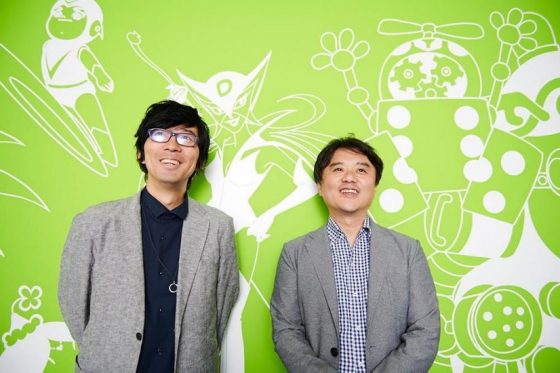
Subscribe to TOM and Support Otaku Coin!
Be sure to subscribe! Download the Otaku Coin app for iOS and Google Play!
